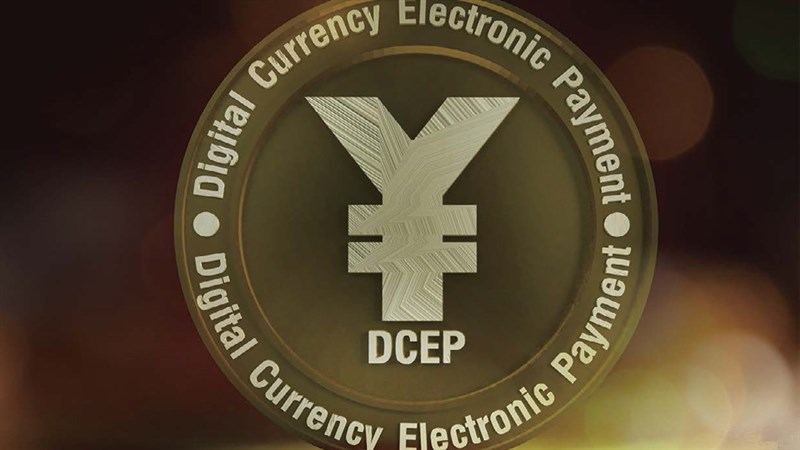2020.10 The Taiwan Banker NO.130 / By Matthew Fulco
A Digital Yuan Won't Resolve China's Dollar Hegemony DilemmaChina's closed financial system will hinder the renminbi's global prospects, whether it's the existing currency or one based on a blockchain
China's advent of a central bank digital currency has rekindled the world's interest in renminbi internationalization, which has stalled amid concern in Beijing about maintaining control over the financial system. It seems like a lifetime ago, but in the twilight of former Chinese leader Hu Jintao's second term some analysts predicted China would let the yuan float freely and make the capital account fully convertible as early as 2020. In hindsight, such a forecast looks wildly optimistic. While Beijing has allowed the yuan to appreciate significantly against the dollar, that's not the same as letting the market decide the exchange rate. Capital controls, meanwhile, are tighter than ever. These capital controls limit the investment choices of Chinese citizens, fuel property bubbles and hinder the country's development of stable capital markets. It's no wonder that the renminbi accounts for just 2% of global foreign exchange reserve assets, behind the pound sterling (5%), yen (6%), euro (21%) and dollar (61%), according to the International Monetary Fund (IMF). The data show why the idea of the yuan replacing the dollar as the world's premier reserve currency is far-fetched. The yuan may not even surpass the pound and yen anytime soon. Morgan Stanley, however, thinks otherwise. The New York City-based investment bank said in a September report that the yuan could become the No. 3 reserve currency in the world within a decade, buoyed by the opening of China's financial sector to foreign investment as well as increasing cross-border capital markets integration and greater usage of the renminbi in China's cross-border transactions. Given those trends, Morgan Stanley expects global central banks will need to hold more renminbi as part of their reserves. As of the end of 2019, 70 central banks had yuan in their reserves, up from 60 a year earlier. Morgan Stanley did acknowledge in the report that several variables could stymie this new wave of renminbi internationalization: China's financial markets might not open as quickly as expected to foreign investment, or tensions with the U.S. could spike. Thus far, none of the world's major advanced economies have rushed to fill their foreign exchange reserves with renminbi. Russia has been primarily responsible for the rise in the use of the yuan as a reserve currency. As part of efforts to wean itself off the dollar, Russia bought one-fourth of the world's yuan reserves in 2018, moving the equivalent of US$44 billion into the Chinese currency. Morgan Stanley noted that it is "not yet clear to what extent others will follow suit, particularly if the broader opening up of the [Chinese] economy does not take place in time.” Indeed, Beijing and Moscow are in a unique position: They have a shared interest in circumventing Washington's chokehold on the international financial system. Fear of U.S. sanctions has motivated their cooperation more than market-based considerations. Russia has felt the sting of U.S. sanctions since its 2014 annexation of Crimea. China worries the U.S. could restrict its access to dollar clearing and the SWIFT international payments system. "Such things have already happened to many Russian businesses and financial institutions. We have to make preparations early – real preparations, not just psychological preparations,” Fang Xinghai, vice-chairman at the China Securities Regulatory Commission, said in June at a forum organized by the Chinese media Caixin. Beijing also worries about the U.S. Federal Reserve's voracious appetite for quantitative easing. Dollar devaluation could harm China's vast U.S. treasury holdings and greenback-denominated assets. “Yuan internationalization is a must to offset external financial pressure,” Fang said. The dollar's share of trade between China and Russia plunged from 90% in 2015 to just 46% in the first quarter of 2020, according to data compiled by Russia's Central Bank and Federal Customs Service. The renminbi is not the main beneficiary of "de-dollarization" though - that would be the freely convertible euro that now accounts for 30% of settlements between Beijing and Moscow. The renminbi and Russian ruble together account for the remaining 24%. The limits of the digital yuan Russia will likely be a key player in an emerging bloc of nominally pro-Beijing countries that settle transactions in China's digital fiat currency, which has the awkward moniker of "digital currency/electronic payment" (DCEP). Developing countries participating in China's neo-imperial Belt and Road Initiative (BRI) will also likely want to tap the efficiencies of blockchain-based settlements. Countries eager to sidestep U.S. sanctions can benefit from transacting on a blockchain beyond the reach of Washington's long arm. North Korea and Iran, two-thirds of former U.S. President George Bush's "Axis of Evil," come to mind. China is North Korea's largest trading partner. A document leaked in July obtained by The New York Times suggests that China and Iran are entering a comprehensive 25-year strategic partnership. Under the terms described in the document, China would invest in Iran's financial, telecommunications and transportation sectors and receive discounts on Iranian oil. The digital yuan could be linked to China's Cross-border Interbank Payment System (CIPS), established in 2015 to boost global use of the renminbi and reduce China's reliance on the dollar. Currently, CIPS processes about US$19.4 billion daily and is used by 980 financial institutions. CIPS is still a long way from competing with SWIFT, which processes US$6 trillion daily and is used by 10,000 financial institutions. To be sure, the DCEP is significant as the first world's first CBDC from a major economy, and likely the first to be tested on a wide scale. A policy framework on the digital yuan should be complete by the end of the year. The U.S., Europe, the UK and Japan are well behind China in the race to develop a digital fiat currency. "Still, the DCEP by itself will make little difference to whether foreign investors regard the renminbi as a reserve currency," Eswar Prasad, a professor of trade policy at Cornell University and senior fellow at the Brookings Institution, wrote in an August Project Syndicate commentary. Noting that Beijing maintains strict capital controls and still manages the yuan's exchange rate, Prasad added, "Neither policy is likely to change significantly anytime soon." Prasad is correct, because Beijing fears risks to financial stability posed by capital flight more than continued dollar dependency. Washington cannot restrict China's access to dollar clearing without severely disrupting the global economy and financial markets. It could happen in the event of a complete breakdown in bilateral relations, but otherwise such a scenario is thankfully unlikely. In contrast, Beijing plays an ongoing game of whack-a-mole with capital outflows. The smart money in China often wants to leave. New restrictions are regularly needed to keep the money in the country. Amid the coronavirus pandemic, a global economic downturn and a nadir in U.S.-China relations (certainly since diplomatic ties were established in 1979), Beijing is more intent than ever on preventing capital flight. At the same time, under Xi Jinping's rule, China has grown warier of financial liberalization. Xi emphasizes the state's role in the economy more forcefully than any of his recent predecessors. Market mechanisms have a role to play in Xi's China, but it is a limited one. However, we can take comfort in the words of Guo Shuoqing, chairman of the China Banking Regulatory Commission. "China will, as always, unswervingly deepen the reform and enhance the opening-up of the financial sector," he said in June at a forum held in Shanghai.


